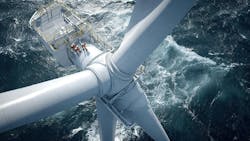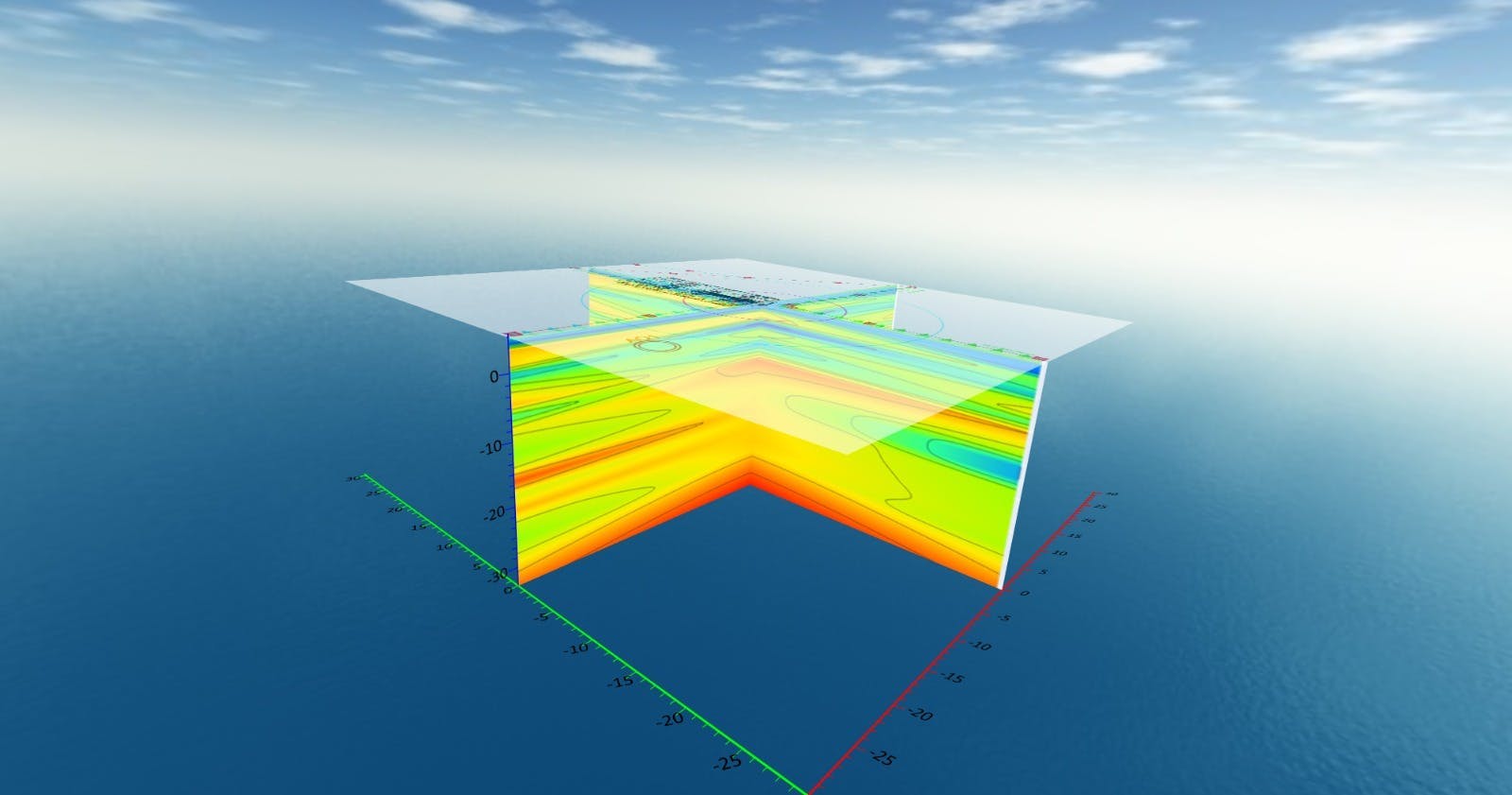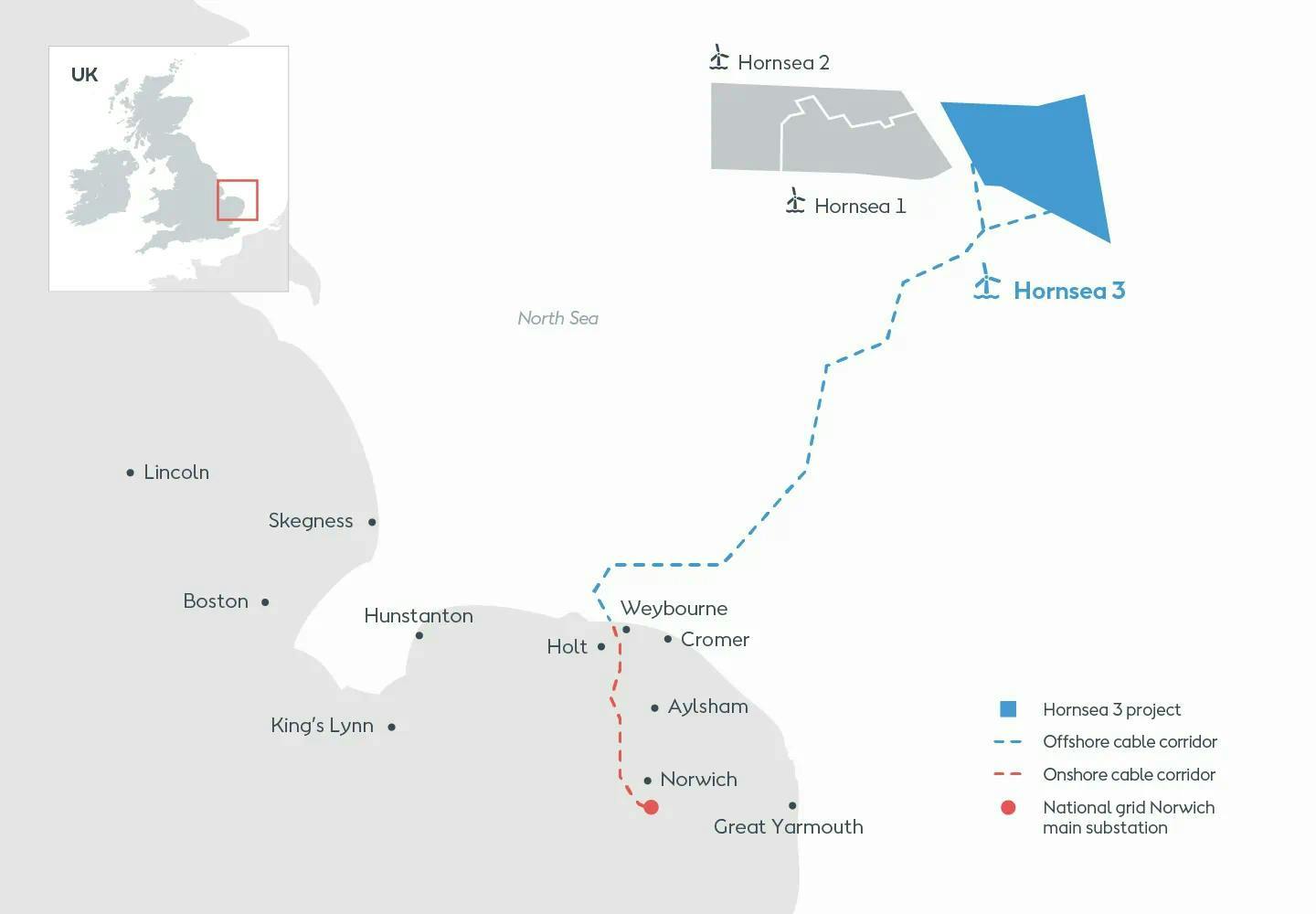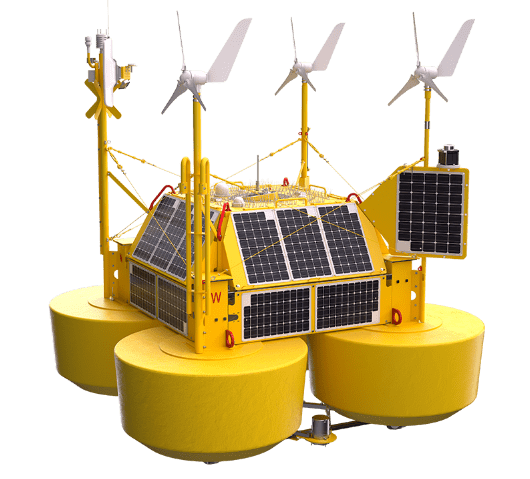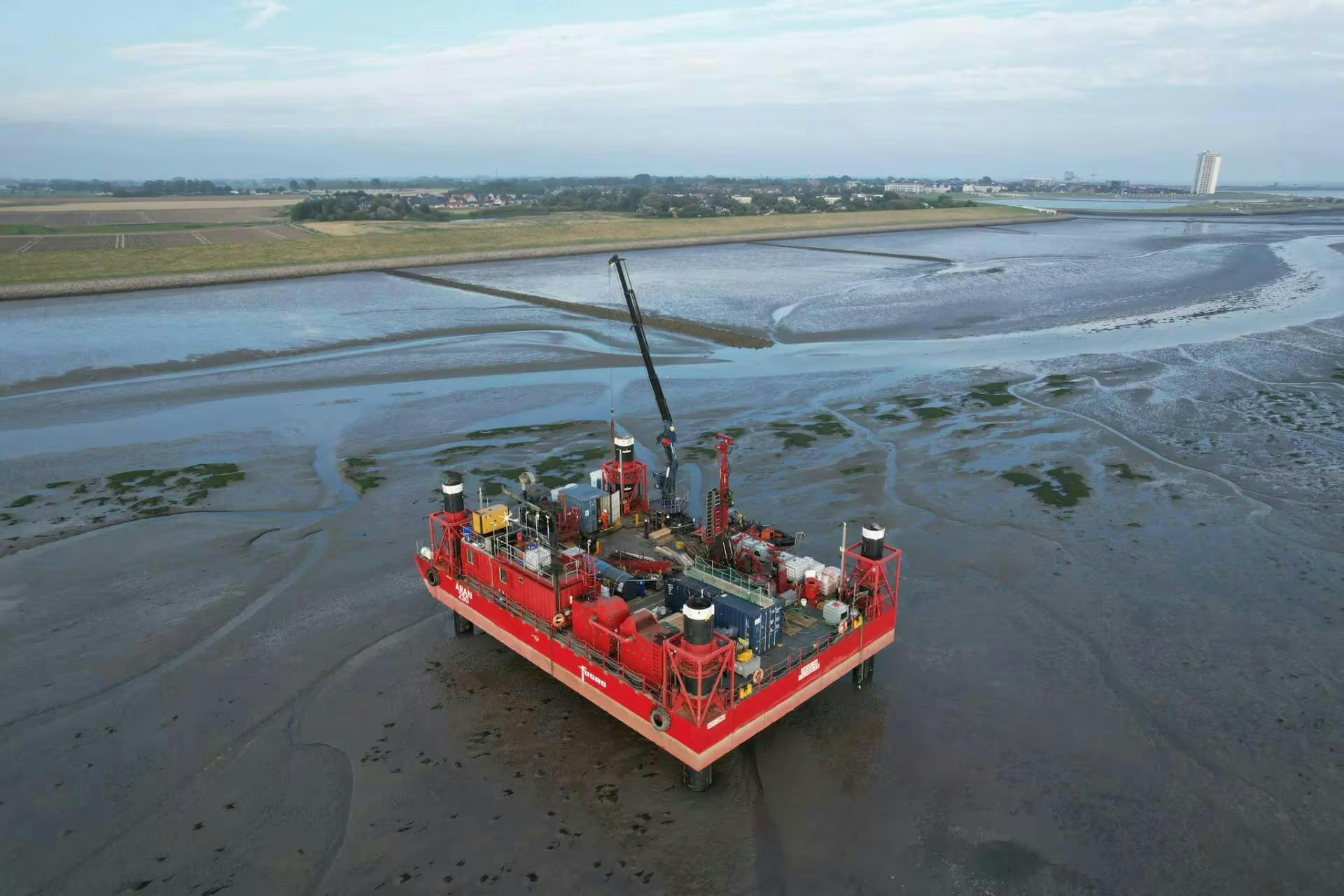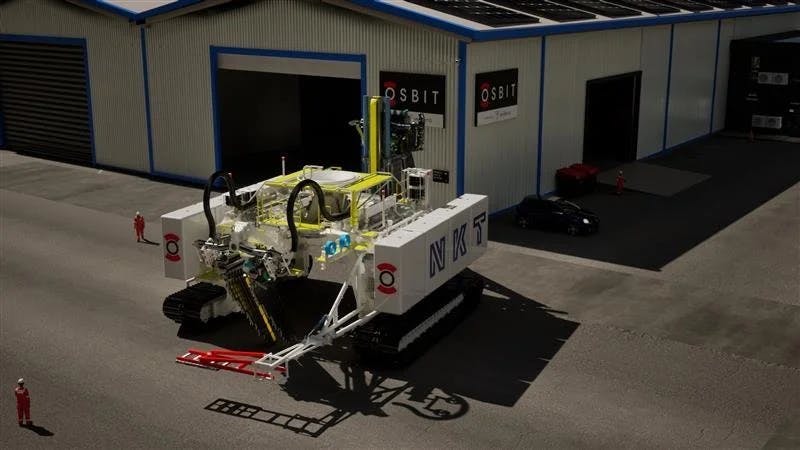From turbines to tradeoffs: Offshore wind’s latest moves in technology, policy and finance
Offshore wind developments continue to accelerate across global markets, with recent milestones highlighting innovation in floating wind design, installation contracting, geotechnical survey technology and grid integration.
From DNV’s approval of Odfjell Oceanwind’s Deepsea Star concept to major EPC investments in the UK North Sea and advanced cable monitoring in the Baltic, these updates reflect the sector’s growing technical sophistication and commercial momentum.
This compilation includes recent news announcements from the international offshore wind sector.
Odfjell Oceanwind gets DNV approval for Deepsea Star offshore wind design
It covers the use of Siemens Gamesa’s SG DD-236 15MW wind turbine generator in a range of offshore wind locations and conditions, including harsh environment areas in the North Sea.
The BDA was in accordance with DNV-RU-OU-0512 classification of floating wind installation designs. The assessment process verified that the Deepsea Star design complies with the governing standard DNV-ST-0119, including the strength and grade of the steel material for the main steel structure, corrosion protection, stability, mooring, marine and electrical systems.
According to Odfjell Oceanwind, the approval should also facilitate future project-specific design optimization and certification processes.
The BDA, the company added, should reduce the risk for developers considering adopting the Deepsea Star floater design.
“This design has also been verified by additional independent analyses, increasing confidence in the review,” said Sille Grjotheim, global segment director of floating offshore wind at DNV.
Cadeler inks foundation and turbine T&I contracts
Cadeler has won two contracts for an unnamed offshore wind development with a combined value of about EUR500 million ($578 million), according to a Nov. 10 company press release. The work scope covers transportation and installation (T&I) of offshore wind turbines and their foundations.
T&I for the foundations is due to start early in 2029, using one of Cadeler’s newbuild A-class vessels. Turbine installations should begin early the following year, performed by one of the company’s O-class jackup vessels.
Subsea Micropiles using Acoustic Zoom techniques for more precise offshore wind surveys
Subsea Micropiles has acquired Acoustic Zoom’s technology IP portfolio, the company announced Nov. 10.
This is a combined acoustic imaging with conventional geotechnical survey techniques. Subsea Micropiles sees potential for the technology to cut the capital costs associated with traditional offshore wind geotechnical survey processes.
The integration of survey field data with ground models, supported by machine learning, should improve understanding of geological conditions, allowing optimization and prediction of the future behavior of engineered anchor and foundation solutions, the company said.
“This acquisition brings together advanced acoustic imaging and AI to deliver high-resolution, real-time ground models, which was previously unavailable offshore. By converting shear wave velocities into actionable insights, we’re enabling smarter foundation decisions earlier in the project lifecycle.”
—Prof. Jacques Yves Guigné, Acoustic Zoom inventor and chief scientific officer at Subsea Micropiles
Earlier this year, Subsea Micropiles demonstrated an application of Acoustic Zoom technology during an anchor installation in the Scapa Flow offshore Orkney, western Scotland. The results are said to have revealed the interaction of drilling and grouting activities within a complex soil formation.
“Leveraging subsea robotics, we are adapting deep pile foundation solutions proven over decades with micropiles as well as survey techniques normally limited to onshore geological test pits.”
—Jon Machin, geotechnical director, Subsea Micropiles
Apollo agrees to join Ørsted in North Sea Hornsea 3 wind development
Ørsted has agreed to divest 50% of its equity in the 2.9-GW Hornsea offshore wind project in the southern UK North Sea to Apollo-managed funds, according to a Nov. 3 company news release.
Terms of the transaction include a commitment from Apollo to fund 50% of the payments for the EPC contract for the wind farm and the offshore transmission facilities. The estimated cost of the project is in the range DKK 70 billion to DKK 75 billion (US$10.79 billion to $11.56 billion).
Subject to regulatory approvals, the transfer should close before the end of the year.
Ørsted will continue to manage construction and provide long-term operations and maintenance services from its East Coast operations and maintenance hub. It will also provide Apollo with balancing services and a long-term route to market for the power generated from Hornsea 3.
The development is 160 km from the Yorkshire coast in Northern England. When completed, the entire Hornsea offshore wind zone, comprising Hornsea 1, 2 and 3, will have a combined capacity of more than 5 GW.
Both Baltic Power substations in place offshore Poland
The joint venture between ORLEN Group and Northland Power has installed two offshore substations for the Baltic Power offshore wind farm in the Baltic Sea, according to an Oct. 29 news release.
The OSS West and OSS East are situated about 20 km from the Polish coast at Choczewo. The topsides of both structures were fabricated at local shipyards in Gdańsk and Gdynia.
They will receive electricity generated by 76 x 15-MW wind turbines connected by inter-array cables, stepping up the voltage to 230 kV before transferring the power to an onshore substation in Choczewo via four offshore export cables and onshore cables.
Each of the offshore substations features two power transformers, gas-insulated switchboards (230 kV/66 kV), a diesel generator, various cranes, and auxiliary switchboards, control and supervision systems.
The main contractor for the substations was a consortium between CS Wind Offshore and Semco Maritime, supported by Polish companies, with Grupa Przemysłowa Baltic responsible for their construction.
Following completion, each structure, weighing 1,300 t, was transported to Denmark for equipment outfitting, increasing their weight to 2,500 t. The cranes were supplied by Polish manufacturer Protea.
Other local companies in Poland manufactured nacelles for the wind turbines, foundation components, and onshore cables.
For the offshore installation program, which involved liifting and placement of the transition pieces and steel structures onto the monopile foundations, the joint venture deployed a floating crane, supported by tugboats, barges, and crew transfer vessels.
Over 20 vessels are currently involved in the simultaneous installation, maintenance and pre-commissioning of the offshore cables, all coordinated from the project’s base in Łeba. Following the conclusion of offshore construction in 2026, testing, certification and permitting will begin.
Baltic Power will be Poland’s first operational offshore wind farm, providing around 1.2 GW of power to the national grid.
TGS, EOLOS offer LiDAR measurements for Brazil’s floating wind sector
The joint service will provide data for offshore wind planning and investment.
TGS’ role will be to manage client contracts, campaign design, deployment and operations. EOLOS, as a subcontractor, will provide its FLS200 floating LiDAR systems for wind, metocean and environmental measurements.
At the same time, TGS will manage engagement with regulators and local stakeholders to ensure programs are adapted to comply with Brazilian content, logistics and permitting requirements.
The FLS200 systems are lightweight, compact structures designed to withstand harsh offshore environments globally.
Combining floating LiDAR measurements with TGS’ existing metocean experience in Brazil should help national and international developers with site selection, and optimization of project layouts and foundation concepts, TGS added.
The two companies have been working together in other offshore wind arenas and measurement campaigns since 2022.
Fugro performs investigations for North Sea Lanwin grid connections
Both are part of a 2-GW program that will link at least 14 offshore connection systems to the local electricity grid.
For the LanWin2 cable route, Fugro deployed its new GroundIQ service for geophysical surveys, including electrical resistivity profiling and a 3D ambient noise tomography technique that uses naturally occurring vibrations to map subsurface conditions.
The geotechnical work involved borehole drilling and cone penetration testing (CPT) at 15 locations, including four in nearshore intertidal zones. Fugro adapted its ARAN 250 jackup platform for the shallow operations to limit seabed disturbance and environmental impact.
At sea, the Fugro Frontier, Fugro Pioneer, and Scotia vessels performed geophysical, unexploded ordnance and electromagnetic crossing surveys for LanWin1 and LanWin2.
For the shallow geotechnical investigations, a fourth vessel, Fugro Resolve, used the company’s Blue Snake geotechnical system, which integrates CPT and sampling technology to acquire data in a single deployment.
The company will deliver the nearshore, offshore and land data to TenneT Germany via its Virgeo cloud-based platform. The results will inform cable design, routing and installation planning.
New trencher vehicle to start commercial operations by 2027
In the port of Blythe, northeast England, Osbit will design a new subsea cable trencher for NKT, to be named NKT T3600, for connecting offshore energy developments to grids, according to an Osbit statement released last month.
The 3,600-HP vehicle, which will feature dual jetting and cutting tools, will be capable of burying high-voltage power cables up to 5.5 m below the seabed, addressing a growing need in Europe to safeguard energy deliveries from accidental damage or potential sabotage.
It will also have a launch and recovery system, and it should be ready to start commercial operations by 2027.
New technology used to monitor Arkona wind farm cables
London-based Indeximate has deployed its Scattersphere technology for continuous cable health monitoring tracking and analysis of two strings at RWE’s Arkona offshore wind farm in the Baltic Sea, which features 13 turbines, the company announced a couple weeks ago.
The technology, which officially launched Nov. 4, uses optical fibers in subsea power cables to collect and interpret distributed acoustic sensing (DAS) data. During last winter’s campaign at Arkona, monitoring and analysis included areas of the cable protection system between touchdown and aperture, and inside the monopile from aperture to hang off.
Over a six-month period, data was collected on the cables as they experienced typical winter storm conditions, the effects of gravity and 7-m tall waves. The system also took dynamic strain measurements 2,000 times per second at 10-m intervals along the cables.
Indeximate then compressed the raw data in real time using its Indeximation technology, for uploading to the Scattersphere cloud portal. Automated analytics then developed several long-term risk profiles for the cable including abrasion, strain, fatigue integrity and vibration.
Analyzing the results in parallel with wave and wind data allowed the company to observe how the cables behaved in certain conditions, such as directional weather and specific wave heights, and also where issues might arise.
This could help identify points of failure in advance, the company added, enabling operations and maintenance staff to develop mitigation methods to avoid potential disruption and downtime.
Njord Survey, Energinet ink site survey services agreement
Gothenburg, Sweden-based Njord Survey has a frame agreement with Denmark’s natural transmission system operator Energinet covering site and route survey services for offshore wind and subsea cable projects.
The company’s vessels will run on biofuel.
FairWind to acquire Cosmic Group
FairWind, headquartered in Vejle, Denmark, has agreed to acquire Brisbane, Australia-based wind farm turbine installation and maintenance specialist Cosmic Group, according to an Oct. 20 press release.
FairWind said the acquisition would extend its footprint into New Zealand and Japan. The business will become the regional hub for FairWind’s APAC operations with one of its founders, Matt Crossan, serving as regional director.
About the Author
Jeremy Beckman
Editor, Europe
Jeremy Beckman has been Editor Europe, Offshore since 1992. Prior to joining Offshore he was a freelance journalist for eight years, working for a variety of electronics, computing and scientific journals in the UK. He regularly writes news columns on trends and events both in the NW Europe offshore region and globally. He also writes features on developments and technology in exploration and production.
